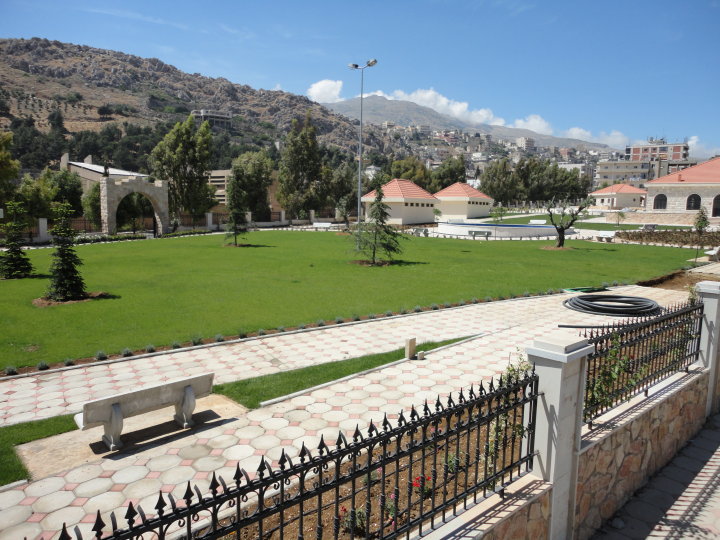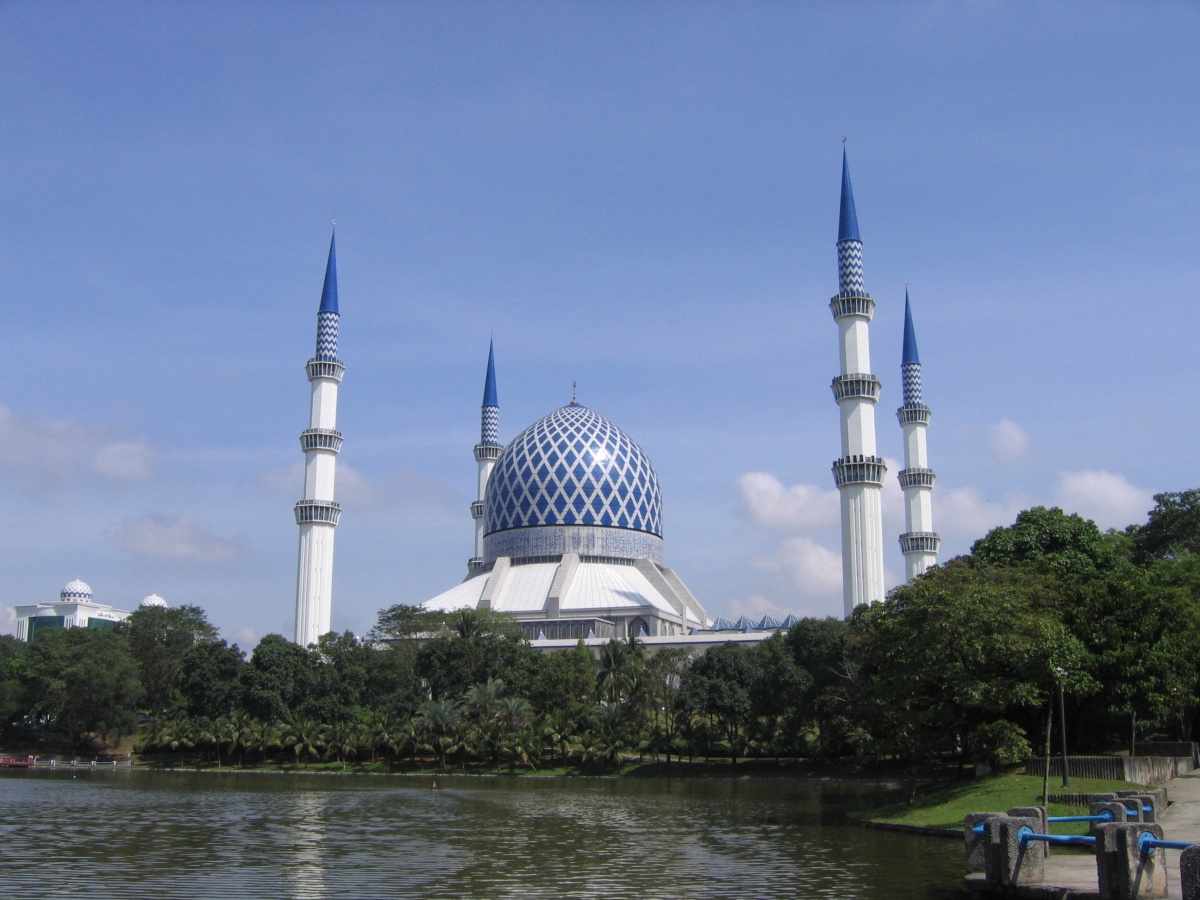|
Saadnayel
Saadnayel ( ar, سعدنايل) is a town in the Bekaa Valley in the Zahlé District of Lebanon. It has a population of around 52,500, mostly Sunnis. Saadnayel lies away from Beirut. The town is located strategically near the crossroads between the Beirut-Damascus highway and the main road connecting the northern and southern Beqaa. History In 1838, Eli Smith noted Saadnayel's population being Sunni Muslim Sunni Islam () is the largest branch of Islam, followed by 85–90% of the world's Muslims. Its name comes from the word '' Sunnah'', referring to the tradition of Muhammad. The differences between Sunni and Shia Muslims arose from a disagre .... The town has been the site of sporadic Sunni-Shia violence. Up to 35,000 refugees of the Syrian Civil War have also settled in the town. References Bibliography * {{Zahle District Populated places in Zahlé District Sunni Muslim communities in Lebanon ... [...More Info...] [...Related Items...] OR: [Wikipedia] [Google] [Baidu] |
Zahlé District
Zahlé District ( ar, قضاء زحلة, links=no) is an administrative district of the Beqaa Governorate of the Republic of Lebanon. Its capital and largest town is the town of the same name. A reed-roofed town set among the eastern foothills of Mount Sannine. Zahle was founded about 300 years ago in an area whose past reaches back some five millennia. Main cities and towns * Ali an Nahri * Anjar * Barelias * Jdita *Majdal Anjar *Qabb Ilyas *Rayak * Saadnayel * Taalabaya *Zahlé * Qâa er Rîm Demographics The Zahlé district is one of the most diverse regions in Lebanon. Roughly 55% of the population is of the Christian religion, with a decent portion being Greek Catholic. The remaining 45% of the population is of the Muslim religion, which the majority belongs to the Sunni and a minority of Shiite denominations. The area is also home to a modest Armenian Orthodox and Catholic population, who have historically resided near the Anjar area of the district. Other settlement ... [...More Info...] [...Related Items...] OR: [Wikipedia] [Google] [Baidu] |
Governorates Of Lebanon
Lebanon is divided into nine governorates ('' muhafazah''). Each governorate is headed by a governor (''muhafiz''): All of the governorates except for Beirut and Akkar are divided into districts, which are further subdivided into municipalities. The newest governorate is Keserwan-Jbeil, which was gazetted on 7 September 2017 but whose first governor, Pauline Deeb, was not appointed until 2020. Implementation of the next most recently created governorates, Akkar and Baalbek-Hermel, also remains ongoing since the appointment of their first governors in 2014. See also * Politics of Lebanon Lebanon is a parliamentary democratic republic within the overall framework of confessionalism, a form of consociationalism in which the highest offices are proportionately reserved for representatives from certain religious communities. The ... References External links Lebanon 1 Governorates, Lebanon Governorates Subdivisions of Lebanon {{Lebanon-geo-st ... [...More Info...] [...Related Items...] OR: [Wikipedia] [Google] [Baidu] |
Beqaa Governorate
Beqaa ( ') is a governorate in Lebanon. Districts Since 2014, Beqaa Governorate contains three districts: * West Beqaa * Rashaya * Zahle A law was passed in 2003 to separate Baalbek District and Hermel District from Beqaa Governorate to form a new governorate, Baalbek-Hermel Governorate french: Baalbek-Hermel , settlement_type = Governorate , image_skyline = Baalbek (4594513263).jpg , image_caption = Baalbek , image_flag = , image_seal = , image_shield = , image_ .... Implementation of Baalbek-Hermel began in 2014 with the appointment of its first governor. Demographics According to voter registration data, the governorate is approximately 41% Christian to 52% Muslim to 7% Druze (313505 voters). In the district (qadaa) of Zahlé (meaning an area much greater than that of the city proper), Christians form a majority of 55% of voters (172555 in total). In the district of West Beqaa-Rashaya (the two are co ... [...More Info...] [...Related Items...] OR: [Wikipedia] [Google] [Baidu] |
Districts Of Lebanon
The nine governorates of Lebanon are subdivided into 25 districts (''Aqdya'', singular'' qadaa''). Beirut Governorate is not subdivided into districts, and Akkar Governorate comprises a single district. The districts are further divided into municipalities. List of districts Capitals (مراكز) of the governorates and districts are indicated in parentheses. # Akkar Governorate ( Halba) #* Akkar ( Halba) # Baalbek-Hermel Governorate ( Baalbek) #* Baalbek ( Baalbek) #* Hermel ( Hermel) #Beirut Governorate (Beirut) # Beqaa Governorate ( Zahlé) #* Rashaya ( Rashaya) #* Western Beqaa ( Joub Jannine - winter Saghbine - summer) #* Zahle ( Zahlé) # Mount Lebanon Governorate (Baabda) #* Byblos ( Byblos) #* Keserwan ( Jounieh) #* Aley ( Aley) #*Baabda (Baabda) #* Chouf ( Beiteddine) #*Matn/Metn ( Jdeideh) # Nabatieh Governorate ( Nabatieh) #* Bint Jbeil ( Bint Jbeil) #* Hasbaya ( Hasbaya) #* Marjeyoun ( Marjeyoun) #* Nabatieh ( Nabatieh) #North Governorate ( Tripoli) #* Batroun ( ... [...More Info...] [...Related Items...] OR: [Wikipedia] [Google] [Baidu] |
Eastern European Time
Eastern European Time (EET) is one of the names of UTC+02:00 time zone, 2 hours ahead of Coordinated Universal Time. The zone uses daylight saving time, so that it uses UTC+03:00 during the summer. A number of African countries use UTC+02:00 all year long, where it is called Central Africa Time (CAT), although Egypt and Libya also use the term ''Eastern European Time''. The most populous city in the Eastern European Time zone is Cairo, with the most populous EET city in Europe being Athens. Usage The following countries, parts of countries, and territories use Eastern European Time all year round: * Egypt, since 21 April 2015; used EEST ( UTC+02:00; UTC+03:00 with daylight saving time) from 1988–2010 and 16 May–26 September 2014. See also Egypt Standard Time. * Kaliningrad Oblast (Russia), since 26 October 2014; also used EET in years 1945 and 1991–2011. See also Kaliningrad Time. * Libya, since 27 October 2013; switched from Central European Time, whic ... [...More Info...] [...Related Items...] OR: [Wikipedia] [Google] [Baidu] |
Bekaa Valley
The Beqaa Valley ( ar, links=no, وادي البقاع, ', Lebanese ), also transliterated as Bekaa, Biqâ, and Becaa and known in classical antiquity as Coele-Syria, is a fertile valley in eastern Lebanon. It is Lebanon's most important farming region. Industry also flourishes in Beqaa, especially that related to agriculture. The Beqaa is located about east of Beirut. The valley is situated between Mount Lebanon to the west and the Anti-Lebanon Mountains to the east. It forms the northeasternmost extension of the Great Rift Valley, which stretches from Syria to the Red Sea. Beqaa Valley is long and wide on average. It has a Mediterranean climate of wet, often snowy winters and dry, warm summers. The region receives limited rainfall, particularly in the north, because Mount Lebanon creates a rain shadow that blocks precipitation coming from the sea. The northern section has an average annual rainfall of , compared to in the central valley. Nevertheless, two ... [...More Info...] [...Related Items...] OR: [Wikipedia] [Google] [Baidu] |
Sunnis
Sunni Islam () is the largest branch of Islam, followed by 85–90% of the world's Muslims. Its name comes from the word ''Sunnah'', referring to the tradition of Muhammad. The differences between Sunni and Shia Muslims arose from a disagreement over the succession to Muhammad and subsequently acquired broader political significance, as well as theological and juridical dimensions. According to Sunni traditions, Muhammad left no successor and the participants of the Saqifah event appointed Abu Bakr as the next-in-line (the first caliph). This contrasts with the Shia view, which holds that Muhammad appointed his son-in-law and cousin Ali ibn Abi Talib as his successor. The adherents of Sunni Islam are referred to in Arabic as ("the people of the Sunnah and the community") or for short. In English, its doctrines and practices are sometimes called ''Sunnism'', while adherents are known as Sunni Muslims, Sunnis, Sunnites and Ahlus Sunnah. Sunni Islam is sometimes referred to ... [...More Info...] [...Related Items...] OR: [Wikipedia] [Google] [Baidu] |
Beirut
Beirut, french: Beyrouth is the capital and largest city of Lebanon. , Greater Beirut has a population of 2.5 million, which makes it the third-largest city in the Levant region. The city is situated on a peninsula at the midpoint of Lebanon's Mediterranean coast. Beirut has been inhabited for more than 5,000 years, and was one of Phoenicia's most prominent city states, making it one of the oldest cities in the world (see Berytus). The first historical mention of Beirut is found in the Amarna letters from the New Kingdom of Egypt, which date to the 14th century BC. Beirut is Lebanon's seat of government and plays a central role in the Lebanese economy, with many banks and corporations based in the city. Beirut is an important seaport for the country and region, and rated a Beta + World City by the Globalization and World Cities Research Network. Beirut was severely damaged by the Lebanese Civil War, the 2006 Lebanon War, and the 2020 massive explosion in th ... [...More Info...] [...Related Items...] OR: [Wikipedia] [Google] [Baidu] |
Damascus
)), is an adjective which means "spacious". , motto = , image_flag = Flag of Damascus.svg , image_seal = Emblem of Damascus.svg , seal_type = Seal , map_caption = , pushpin_map = Syria#Mediterranean east#Arab world#Asia , pushpin_label_position = right , pushpin_mapsize = , pushpin_map_caption = Location of Damascus within Syria , pushpin_relief = 1 , coordinates = , subdivision_type = Country , subdivision_name = , subdivision_type1 = Governorate , subdivision_name1 = Damascus Governorate, Capital City , government_footnotes = , government_type = , leader_title = Governor , leader_name = Mohammad Tariq Kreishati , parts_type = Municipalities , parts = 16 , established_title = , established_date ... [...More Info...] [...Related Items...] OR: [Wikipedia] [Google] [Baidu] |
Eli Smith
Eli Smith (born September 13, 1801, in Northford, Connecticut, to Eli and Polly (Whitney) Smith, and died January 11, 1857, in Beirut, Lebanon) was an American Protestant missionary and scholar. He graduated from Yale College in 1821 and from Andover Theological Seminary in 1826. He worked in Malta until 1829, then in company with H. G. O. Dwight traveled through Armenia and Georgia to Persia. They published their observations, ''Missionary Researches in Armenia'', in 1833 in two volumes. Eli Smith settled in Beirut in 1833. Along with Edward Robinson, he made two trips to the Holy Land in 1838 and 1852, acting as an interpreter for Robinson in his quest to identify and record biblical place names in Palestine, which was subsequently published in Robinson's '' Biblical Researches in Palestine''. He is known for bringing the first printing press with Arabic type to Syria Syria ( ar, سُورِيَا or سُورِيَة, translit=Sūriyā), officially the Syrian Arab ... [...More Info...] [...Related Items...] OR: [Wikipedia] [Google] [Baidu] |
Sunni Muslim
Sunni Islam () is the largest branch of Islam, followed by 85–90% of the world's Muslims. Its name comes from the word '' Sunnah'', referring to the tradition of Muhammad. The differences between Sunni and Shia Muslims arose from a disagreement over the succession to Muhammad and subsequently acquired broader political significance, as well as theological and juridical dimensions. According to Sunni traditions, Muhammad left no successor and the participants of the Saqifah event appointed Abu Bakr as the next-in-line (the first caliph). This contrasts with the Shia view, which holds that Muhammad appointed his son-in-law and cousin Ali ibn Abi Talib as his successor. The adherents of Sunni Islam are referred to in Arabic as ("the people of the Sunnah and the community") or for short. In English, its doctrines and practices are sometimes called ''Sunnism'', while adherents are known as Sunni Muslims, Sunnis, Sunnites and Ahlus Sunnah. Sunni Islam is sometimes referred ... [...More Info...] [...Related Items...] OR: [Wikipedia] [Google] [Baidu] |

.png)





